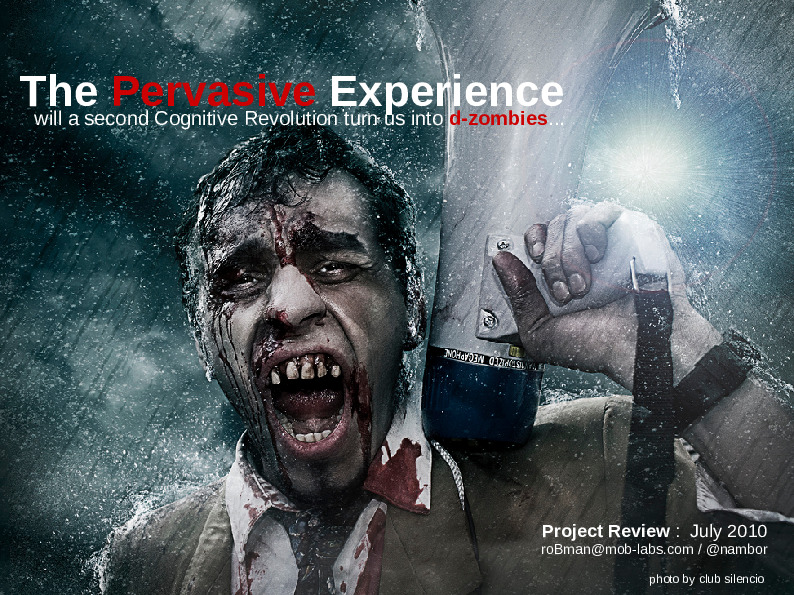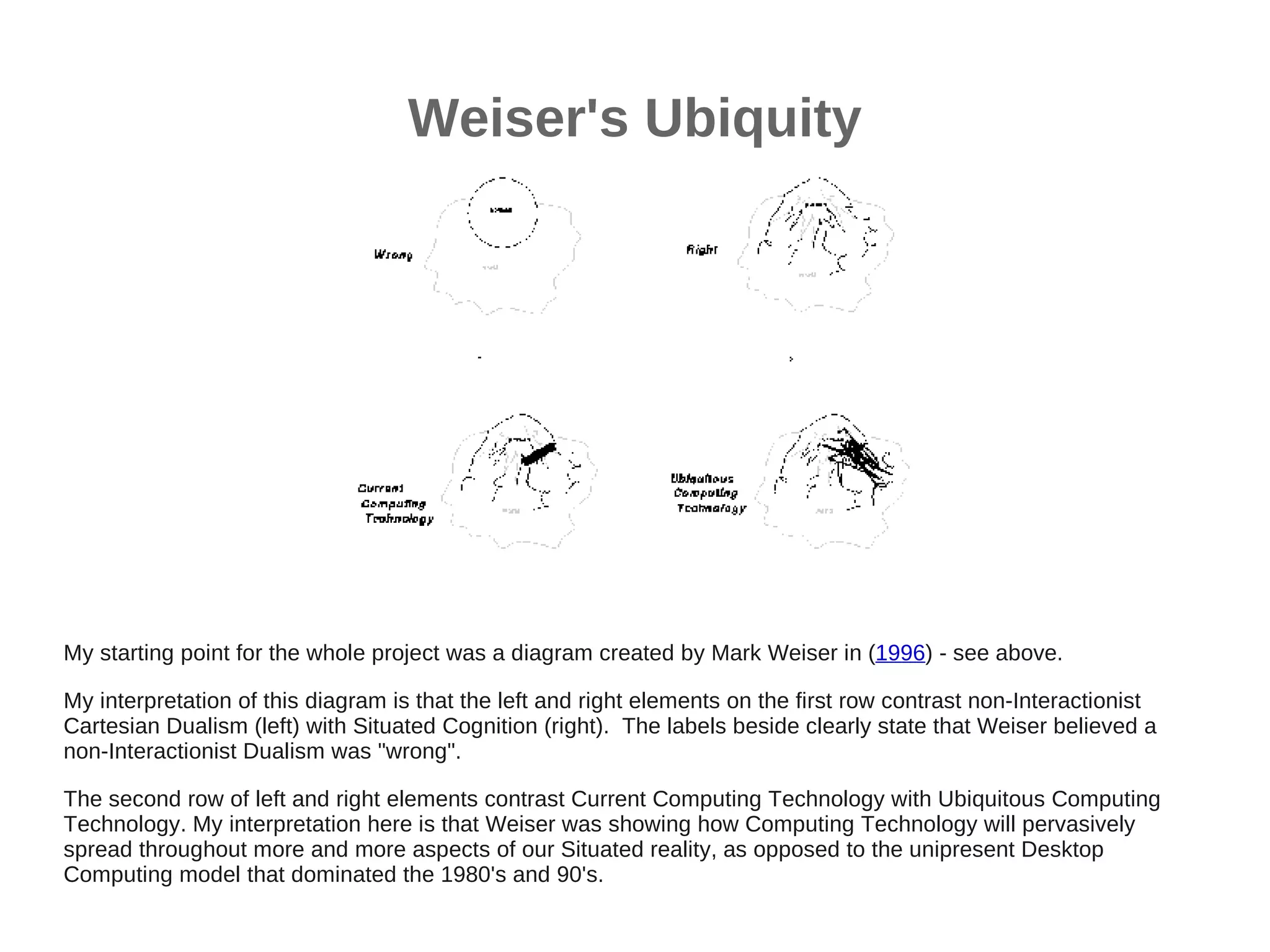
Who Am I?
My name is Rob Manson and I develop geometric methods for measuring latent models (self-other-world) using LLMs as my experimental platform. My work turns philosophical concepts into testable predictions.
This research sits at the intersection of AI safety, consciousness science, and mechanistic interpretability. I’m interested in questions that have traditionally been considered “philosophical” but can be made empirical with the right tools and experimental systems.
Background:
In 2010 (around 15 years ago as I write this) I started exploring some ideas that at the time seemed pretty fringe. This has now evolved into this research project.
It’s a long read and I don’t expect you to look through it in detail, but if you want to skim through, then here’s a link to a document I posted way back in 2010. The Pervasive Experience Project - July 2010

The starting point for this whole thing was a single diagram drawn by the late Marc Weiser. Unfortunately, his original website is now badly broken, even in the internet archive, and all I have left is this poor quality copy from my 2010 document.

Sadly it seems even the web is now getting it’s own form of alzheimers.
During the intervening years I dove head first into R&D in Computer Vision, Augmented & Virtual Reality. I’m really proud of the work our team created (including many world firsts) and I was happy to serve as an Invited Expert for the W3C, Khronos Group and the International Standards Organisation.
Research Philosophy
Three principles guide this work:
1. Operationalise or abandon
If a concept can’t be measured or tested, either find a way to operationalise it or stop talking about it. Phenomenology is valuable, but hand-waving isn’t.
2. LLMs as instruments, not subjects
I use LLMs as experimental platforms for testing theories about cognition - not because I claim they’re conscious, but because they’re systems where geometric methods can be applied and predictions falsified.
3. Build in public
Research develops faster with feedback. I share work-in-progress, negative results, and open problems. Code and data are public. Methods should be reproducible.
Contact & Collaboration
Interested in collaborating? I’m looking for:
- Mechanistic interpretability researchers wanting to apply geometric methods
- AI safety researchers focused on computational self-models and deception detection
- Consciousness scientists interested in computational approaches
- Philosophers who want to test phenomenological predictions empirically
GitHub: robman
Bluesky: https://bsky.app/profile/robman.fyi
LinkedIn: https://www.linkedin.com/in/robertmanson/
How to Follow This Work
Weekly updates: Subscribe to Latent Geometry Lab
Research program: Overview
Papers & code: Publications · GitHub